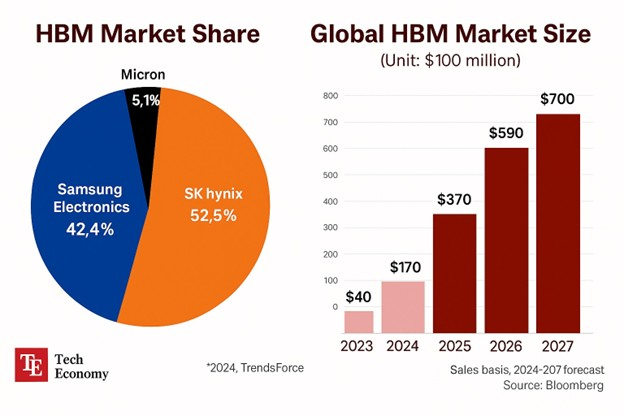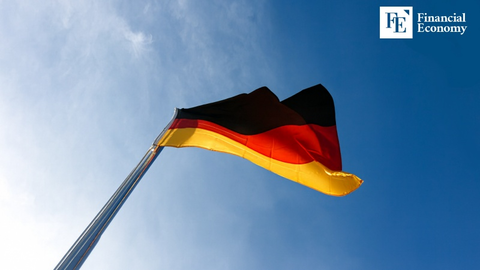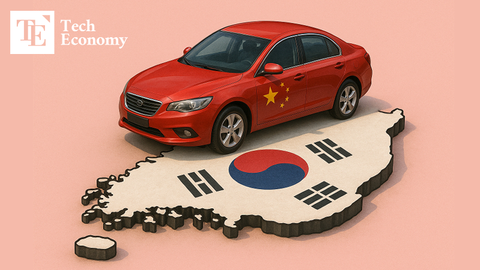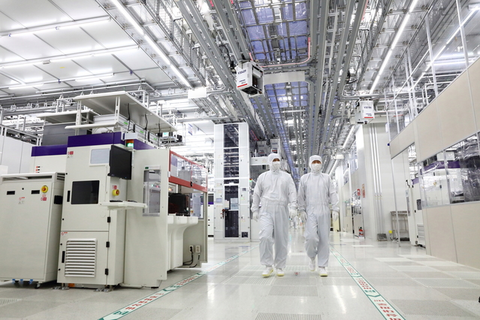The Throne Shakes Under China’s Cost-Effective TV Offensive: Samsung and LG’s ‘Premium Strategy’ Put to the Test
Input
Modified
“Direct Hit from China’s ‘Value-for-Money Shock’” “Rapid Infiltration of North American and European Markets” “Samsung and LG Take the Opposite Approach with Premium Strategies”

For years, Samsung Electronics and LG Electronics have reigned as unchallenged leaders in the global TV market, celebrated for their cutting-edge technology, sophisticated designs, and strong brand reputation. Their dominance seemed untouchable. But the ground beneath them is now shaking as Chinese powerhouses like TCL and Hisense mount an aggressive offensive, rapidly gaining market share by offering large-screen TVs at unbeatable prices. The shift is dramatic. Samsung has plummeted to fourth place in the global Mini LED TV market, while LG has seen its presence eroded significantly in key markets like the United States and Europe. Both Korean giants are now doubling down on premium strategies to protect their market positions, but there is growing unease about whether this approach is enough to withstand the unrelenting advance of their Chinese rivals.
A Changing Market: When “Good Enough” Is Enough
What’s happening in the TV market today is not just a typical price war; it represents a fundamental shift in consumer behavior and market dynamics. Data from Counterpoint Research reveals that in the first quarter of 2025, Samsung’s share of the global premium TV market nosedived from 39 percent to 28 percent within just one year, while LG’s share also shrank significantly from 23 percent to 16 percent. During the same period, Hisense's market share surged from 14 percent to 20 percent, and TCL's jumped from 13 percent to 19 percent, signaling an undeniable shift in the competitive landscape. Nowhere is this shift more visible than in the Mini LED TV segment. Once the undisputed leader in this category, Samsung has now slipped to fourth place in terms of sales volume and third in terms of revenue. After relinquishing the top spot to TCL last year, Samsung’s decline continued as Xiaomi overtook it this year, a stunning fall from dominance in a category it once pioneered.
The secret behind the rapid rise of Chinese brands lies not only in lower prices but in their ability to control critical parts of the supply chain. Mini LED TVs rely on large LCD panels as a key component, and Chinese companies now dominate this sector. This control enables them to produce larger screens at lower costs, giving them a significant edge in pricing. TCL secures its supply through its affiliate CSOT, while Hisense has established a nearly vertically integrated production system built on a robust domestic supply chain. This structural advantage has allowed them to claim pricing power that even global giants like Samsung and LG are struggling to match.
As this advantage widens, consumers are reevaluating what matters most. Increasingly, they are concluding that the difference in quality between Chinese and Korean TVs is no longer as significant as it once was. If a television offers a large, bright screen with decent picture quality at a much lower price, many are asking themselves why they should pay more. Where once brand reputation and cutting-edge technology justified premium prices, the gap has narrowed to the point where many buyers feel that the performance of Chinese TVs is more than adequate for their needs. This marks a profound change in consumer psychology, one that is upending the industry.
The rising price sensitivity among global consumers, combined with the steady technological improvements from Chinese manufacturers, has fundamentally altered the competitive landscape. This shift is no accident but the outcome of years of investment by Chinese brands in improving manufacturing efficiency, expanding their supply chains, and mastering the production of high-quality display panels. Now, the traditional advantages that companies like Samsung and LG once held, superior technology, design, and brand loyalty, are being challenged by a new equation where value for money takes precedence.
The Premium Gamble: Samsung and LG’s High-Stakes Strategy
Faced with this growing onslaught, Samsung and LG have pivoted toward a high-risk, high-reward strategy focused almost exclusively on premium products. It is a deliberate decision not to fight the Chinese brands on their turf, the mid-to-low-end market, but instead to secure profitability and preserve brand value through high-margin, high-end TVs, such as OLED, QD-OLED, and Micro LED models. This is not just a strategic choice but an existential one. The mass-market segment, once a battleground for all manufacturers, has largely been ceded to Chinese players who now dominate through a potent combination of affordability and scale.
Samsung has placed its bets on flagship models like its ‘Neo QLED’ and ‘Micro LED’ TVs, aiming to lead the next generation of displays by emphasizing cutting-edge picture quality, high brightness, and rich contrast enabled by thousands of miniature LED backlights paired with sophisticated AI-driven image processing. LG, in parallel, has doubled down on OLED and QD-OLED technologies, expanding its lineup of premium displays designed to deliver superior color accuracy, ultra-thin profiles, and immersive viewing experiences.
Both companies are heavily leaning into technological differentiation by offering televisions equipped with AI-powered picture enhancement, advanced sound technologies, and support for high refresh rates that appeal particularly to gamers and cinephiles. This focus reflects their belief that the premium market can still sustain their dominance, if not in volume, then at least in profitability.
Executives at LG remain confident in their technological edge. As one of the company’s AI service development leads, Baek Seung-hyun, argues, Chinese manufacturers may have seized control over panel production, but they still lack the system-on-chip (SoC) capabilities and software platforms like LG’s webOS that are integral to the modern TV experience. From his perspective, the technological gap remains meaningful, offering LG and Samsung a critical defensive line against the rising tide of Chinese competitors.
Yet as this battle unfolds, the Chinese brands are proving they are no longer content with just the entry-level market. In the U.S., TCL has risen to second place in shipments, right behind Samsung, while Hisense has already overtaken LG. Their success is not limited to price; both companies are rapidly refining their design language, improving panel quality, and introducing premium features. They understand regional preferences well, particularly in the U.S., where demand for TVs 55 inches and larger continues to grow, and they have responded with an aggressive rollout of large-screen models that meet these consumer desires.
This strategy is equally apparent in Europe. Markets like the United Kingdom, Germany, and France are witnessing a swift rise in the popularity of TCL and Hisense, while LG’s presence has shrunk dramatically in some Western European regions. In fact, during major sporting events such as the World Cup and the Euro Cup, sales of Chinese TVs spike significantly as these companies align their marketing and distribution strategies with local consumption patterns, effectively capitalizing on moments of peak demand.
Chinese companies have not merely expanded their market share; they have also established robust logistics networks and retail partnerships with major distributors, including Walmart, Amazon, and regional European retailers. This comprehensive infrastructure now enables them to compete head-on not just on price, but also on availability, service, and a rapidly improving perception of quality among global consumers.

Is the Premium Bet Enough to Save Korea’s TV Kings?
Despite the fierce push to solidify their positions in the premium segment, doubts are growing over whether Samsung and LG’s strategy will be enough. The reality is that demand for ultra-premium televisions is naturally limited. Not every household is willing or able to spend top dollar on features like OLED, Micro LED, or AI-powered processors, especially at a time when global economic uncertainty is making consumers more cautious about big-ticket purchases.
Industry experts like Lee Choong-hoon, CEO of UBI Research, are increasingly vocal in expressing their concerns. While he acknowledges that the premium strategy may serve as an effective buffer to protect short-term profitability, he questions whether it can serve as a long-term bulwark against the relentless momentum of Chinese manufacturers. If the technological gap continues to close and Chinese companies further refine their design and feature sets, even the premium segment may not remain immune to disruption.
Lee suggests that broader measures may be necessary if Korean TV makers are to survive this evolving landscape. These could include government-level interventions such as subsidies for domestic manufacturers or protective tariffs against Chinese imports, policies designed to buy time and breathing room for Samsung and LG to further innovate and restructure. Without such measures, he warns, the current strategy risks becoming a slow retreat rather than a sustainable defense.
What is clear is that the global TV market has entered a new era. The formula that once guaranteed success, combining superior technology with premium branding, is no longer sufficient on its own. Consumers are increasingly drawn to the compelling mix of large screens, decent picture quality, and unbeatable prices offered by Chinese brands. The throne that Samsung and LG have occupied for decades is undeniably under siege, and whether their premium-first gamble proves to be a masterstroke of strategic foresight or a desperate holding pattern remains an open, and increasingly urgent, question.





















